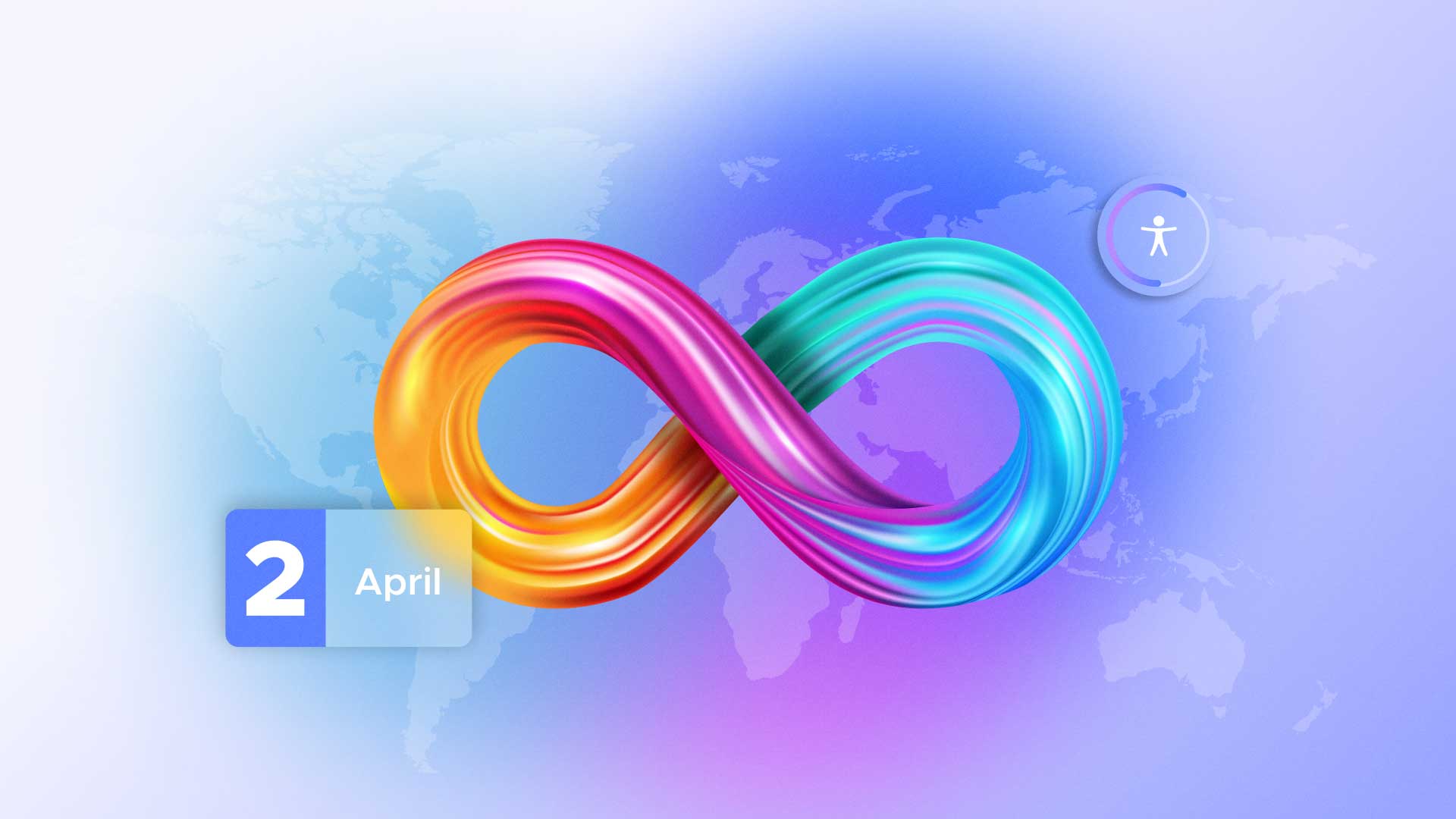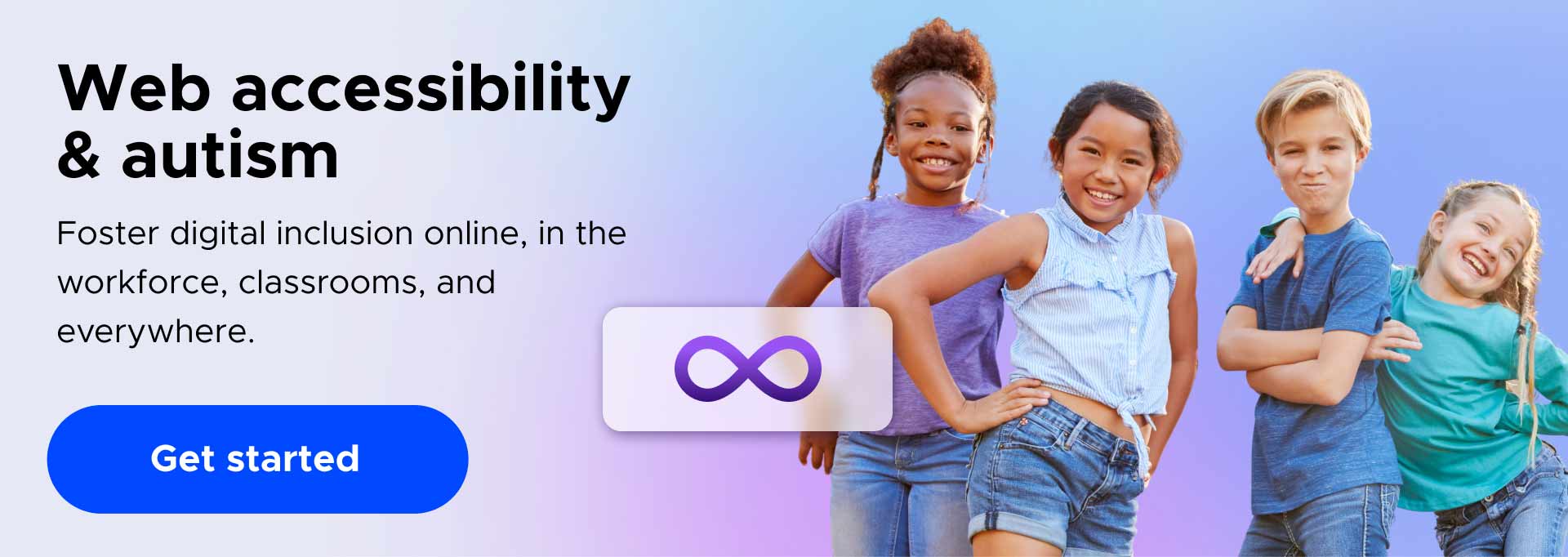World Autism Awareness Day: promoting inclusion across the spectrum

World Autism Awareness Day (2nd April) is celebrated to bring awareness to the strengths, differences and unique perspectives of autistic people. Autism Day is of international importance, presenting an opportunity for people to build a better understanding of autism and how it impacts autistic people’s experience of the world. It’s also a day to build acceptance of autism by promoting understanding for the differences that define people who are on the spectrum. Autism Awareness Day encourages us to look beyond the misconceptions and recognize the inherent value each individual brings to the world.
Just like everyone else, autistic people may interpret, interact with and experience different environments in unique ways. As we celebrate World Autism Awareness Day, let’s first understand what autism is.
What is Autism Spectrum Disorder?
Although it’s no longer widely accepted in the autism community, many of us still rely on outdated medical terminology to describe autism. ‘Autism spectrum disorder’ is one of those outdated terms. This is because many autistic people and families feel that the term ‘disorder’ carries negative connotations. For those experiencing autism first hand or for those close to them, autism is considered a difference, rather than a disorder.
Autism has also been described as a neuro-development difference that presents individuals with neurodivergent experiences. This generally means that an autistic person’s brain processes information in different ways to non-autistic or neurotypical people.
When referring to ‘experiences’, it’s common understanding that autistic individuals experience a heightened sensitivity to sensory stimuli, such as bright colors, lights or loud noises.
There is an abundance of information to explain, describe and define autism. The key point is to recognize that, like every one of us, autistic neurological make-up is unique, diverse and cannot be limited to generalizations.
Let’s look at five facts to further illuminate the complexity and diversity of autism.
What are 6 facts to raise autism awareness?
Autism is a fascinating and complex topic. Currently, 1 in 36 children and 1 in 45 adults in the U.S. are diagnosed with autism, highlighting its widespread impact across different age groups. Here are five key facts to shed some light on this condition:
1. It’s a very broad spectrum
Autism is a spectrum disorder, which means it manifests in many different ways. No two individuals with autism are exactly alike in terms of symptoms and abilities. Some might need significant support in daily life, while others might be entirely independent and excel in their chosen fields.
2. There can be early signs
Signs of autism can often be observed in early childhood. These may include delayed speech development, unusual responses to sensory input (like sounds or lights), and difficulty with social interactions. Early diagnosis and intervention can make a big difference in development and learning.
3. Communication styles are diverse
People with autism might communicate in various ways. Some use spoken language, while others might prefer alternative means like sign language or communication devices. Understanding and patience go a long way in interacting effectively.
4. Experiences of the world differ
Many people with autism experience atypical sensory sensitivities. This can range from hypersensitivity (being extremely sensitive to sensory stimuli like sounds or lights) to hyposensitivity (needing more sensory input to feel comfortable). These sensory differences can profoundly affect their preferences and behaviors.
5. There are developmental differences
Developmental milestones can be met at different times for children with autism. Some might develop certain skills very quickly, while other skills might take longer to emerge.
6. Autism may coexist with other conditions
Autism often coexists with other medical and mental health conditions, such as ADHD, anxiety, epilepsy, and gastrointestinal disorders, which can complicate diagnosis and treatment.
These facts really highlight why it’s so important to tailor support to each individual with autism, taking into account their unique needs and strengths. After all, autism is incredibly diverse, and understanding this spectrum allows people to provide the most effective support possible.
Now, having covered those key facts, let’s now shift gears and explore the colors that light up the world of autism awareness.
What are the colors associated with autism awareness?
The color blue, (associated with calm and acceptance), is the primary color designated for autism. Light it Up Blue is one such campaign that encourages people to wear blue to show support for the autism community. Although blue is the main color, there are other colors associated with autism awareness:
Red: Red has become increasingly associated with autism through the Autism Acceptance movement. It represents the shift from simply being aware of autism to actively accepting and embracing individuals with autism as part of the community.
Multicolor: The autism spectrum is also represented by a multicolored infinity symbol, which includes various colors. This symbol reflects the diversity and complexity within the autism community and promotes the idea of infinite possibilities for individuals with autism.
Gold: The color gold is used in conjunction with the hashtag #RedInstead, representing what some believe to be a more accurate depiction of the autism spectrum, focusing on acceptance rather than awareness.
Recognizing the role of colors in raising autism awareness and understanding, let’s now explore what it means to create autism-friendly environments, where these principles are put into practice every day.
What is an autism-friendly environment?
Creating an autism-friendly physical environment requires thoughtful adjustments to accommodate the diverse needs of individuals with autism. Here’s an exploration of how to do this effectively:
Minimize sensory overload: Sensory sensitivity is a common trait among individuals with autism, which means that overwhelming sensory environments can be particularly challenging. To address this:
Use calm lighting: Use soft, natural lighting wherever possible, avoiding fluorescent lights that flicker and cause discomfort. In places where natural light isn’t sufficient, opt for adjustable lighting systems that allow control over brightness and intensity.
Keep noise levels down: Establish quiet zones or spaces where noise is kept to a minimum. This can be achieved through soundproofing materials or by designating certain areas as low-noise spaces, using signs to indicate this. Additionally, providing noise-canceling headphones can be a helpful option for individuals to manage their sensory input.
Keep it predictable: Individuals with autism often benefit from clear and predictable environments, which reduce anxiety and enhance the ability to function independently.
Use clear signage: Use clear, simple language and symbols for signs. High-contrast colors help make the signs easily distinguishable. For example, using a simple pictogram along with text can help in understanding directions or rules within a space.
Reduce the potential for confusion: Designating specific areas for various activities can help in reducing confusion. For example, in a school setting, having distinct and marked areas for study, play, eating, and relaxation can help students with autism to transition between activities smoothly. Use physical dividers, different color schemes, or floor markings to delineate these areas clearly.
These adjustments help to make physical environments more accessible for individuals with autism and contribute to creating a more inclusive space where everyone feels comfortable and supported.
The digital world also requires careful consideration to become autism-friendly. As technology increasingly permeates every aspect of life, ensuring digital accessibility for individuals with autism is crucial for their full participation in society. Let’s look at some ways to make digital environments more inclusive for people with autism.
Autism in the digital world – In pursuit of accessibility
There is no better time than Autism Awareness Day to explore the importance of the digital experience for autistic people. The digital world can act as a safe space and a comfortable environment for many people on the autistic spectrum. This makes it important to improve the User Experience (UX) on websites to make sure people have clear, simple and easy experiences when online. Adhering to digital accessibility standards is also a legal requirement.
Many autistic people share preferences on how they want to interact with the digital world. From text to speech tools to specific web page layouts, font sizes, color schemes and line spacing, there are advanced, automated tools available that can make websites easier to navigate and understand for autistic people:
If you’re building or updating a website and want to make it more friendly for autistic users, here are some practical tips that can really make a difference:
- Start by integrating text-to-speech tools. These can help users who process auditory information better than text, or who find reading challenging, by converting your website’s written content into spoken words.
- Consider allowing users to customize the layout of your web pages. This can be a game changer for reducing cognitive overload. Giving users the option to simplify the interface, hide overwhelming elements, or adjust content visibility can make your site more user-friendly.
- Font size and style matter more than you might think. Offering options to adjust these can help visitors with visual processing difficulties navigate your site more easily. Larger, simpler fonts can be easier on the eyes.
- Don’t overlook the importance of color schemes. Providing a few different options, including high contrast and dark mode, can significantly enhance readability and comfort for users with visual sensitivities.
- Line spacing can also play a big role in readability. Letting users adjust the spacing between lines can prevent visual stress and make text blocks more approachable.
- Navigation should be in the user’s control. Allowing for adjustable navigation speeds, the ability to pause content, or skip sections can be crucial for those who need more time to absorb information or who easily feel swamped.
- Aim for clear and consistent navigation aids. Keeping navigation tools like menus and breadcrumb trails consistently placed and clearly labeled can reduce confusion and make your website more navigable.
Implementing these features will not only broaden your website’s accessibility but also enhance the overall user experience, making your site a welcoming space for everyone.
Autism and aligning with the WCAG.2.2
After considering these specific adjustments to make your website more autism-friendly, it’s essential to align these efforts with broader accessibility standards. Working closely with the Web Content Accessibility Guidelines (WCAG) is a crucial step in this process.
The WCAG provides a comprehensive framework for making digital content accessible to people with a wide range of disabilities, including sensory, cognitive, and motor impairments. By adhering to WCAG 2.2, you ensure that your digital platforms not only cater to the needs of autistic users but also support a diverse audience.
One of the easiest ways to bring your website into compliance with WCAG 2.2 standards is by implementing tools like the UserWay Accessibility Widget. This powerful tool can automatically adjust your website to meet various accessibility requirements, from enhancing contrast to simplifying navigation. By using such widgets, you can significantly improve the online experience for autistic individuals, ensuring they enjoy your digital content as much as their neurotypical or allistic peers.
By integrating these practices, you can boost website and mobile app usability for autistic users while building a digital environment that is inclusive and welcoming to all.
Every day should be an ‘autism acceptance day’
In a world that celebrates diversity, it’s essential to recognize that understanding autism shouldn’t be confined to a single month or day. Every day should be Autism Acceptance Day – a time to acknowledge the unique talents and perspectives that individuals on the autism spectrum bring to our communities.
Daily acceptance can also help break down the barriers of misunderstanding and stigma that often surround autism. It encourages open conversations and exchanges of ideas, for a more inclusive society where differences are valued.
As we make acceptance a daily practice, let’s champion a shift towards everyday acceptance, where every interaction is an opportunity to support and uplift one another in all our varied human experiences.
UserWay: bringing accessibility awareness to the digital world
UserWay helps businesses bring their websites closer to conformance while promoting inclusivity for everyone who interacts across digital environments. There may be no silver bullet for inclusivity but, by deepening our understanding of autism, continuing our conversations and listening to real-life experiences, we can all reduce barriers and move closer to inclusive practices everywhere. Want to kickstart your digital accessibility journey to support people on the autistic spectrum? Request a demo of how our most popular accessibility solution works today.
FAQS
Is there an Autism Acceptance Day?
There isn’t an officially recognized “Autism Appreciation Day,” but the concept of appreciating and celebrating the strengths and contributions of individuals with autism is gaining traction. The month of April is designated as Autism Awareness Month, with April 2 specifically marked as World Autism Awareness Day. More recently, many advocates and organizations have started to promote April as Autism Acceptance Month, aiming to foster acceptance and inclusive practices.
How can I make my website inclusive of autistic people?
There are many ways you can make your websites more accessible for users of all abilities. From the way you use logos, graphics, video and headings, there are simple steps you can take to improve the user experience for autistic people.
Which digital accessibility standard should I be following?
Web Content Accessibility Guidelines (WCAG) is the set of web accessibility principles that every business should work towards. Although it may not be possible to satisfy every level of the highest level of WCAG 2.2 criteria (AAA), you will be well positioned to make it a goal.





Share